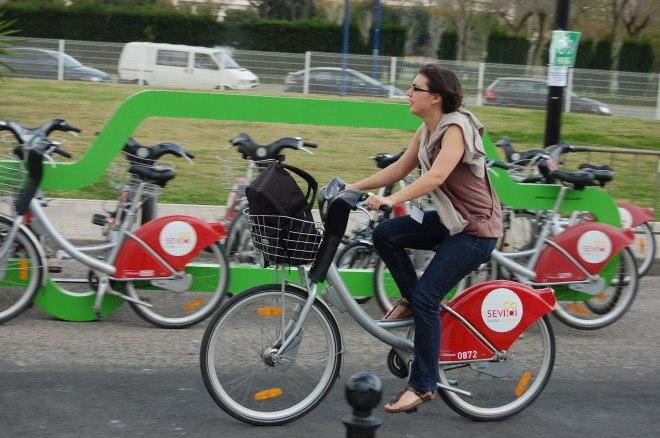- News
- Reviews
- Bikes
- Accessories
- Accessories - misc
- Computer mounts
- Bags
- Bar ends
- Bike bags & cases
- Bottle cages
- Bottles
- Cameras
- Car racks
- Child seats
- Computers
- Glasses
- GPS units
- Helmets
- Lights - front
- Lights - rear
- Lights - sets
- Locks
- Mirrors
- Mudguards
- Racks
- Pumps & CO2 inflators
- Puncture kits
- Reflectives
- Smart watches
- Stands and racks
- Trailers
- Clothing
- Components
- Bar tape & grips
- Bottom brackets
- Brake & gear cables
- Brake & STI levers
- Brake pads & spares
- Brakes
- Cassettes & freewheels
- Chains
- Chainsets & chainrings
- Derailleurs - front
- Derailleurs - rear
- Forks
- Gear levers & shifters
- Groupsets
- Handlebars & extensions
- Headsets
- Hubs
- Inner tubes
- Pedals
- Quick releases & skewers
- Saddles
- Seatposts
- Stems
- Wheels
- Tyres
- Health, fitness and nutrition
- Tools and workshop
- Miscellaneous
- Cross country mountain bikes
- Tubeless valves
- Buyers Guides
- Features
- Forum
- Recommends
- Podcast
news
 Bike sharing in Seville.jpg
Bike sharing in Seville.jpgResearch paper concludes that networking Seville’s cycle lanes helped improved cycle safety
Researchers from the University of Seville have found that connecting the Spanish city’s cycle lanes increased their positive effects on cycling safety.
The study, to be published in the May issue of the journal Accident Analysis and Prevention, looked at the risk of cyclists being involved in a collision with a motor vehicle.
To do this, the researchers looked at data reported by the traffic police in the period 2000 to 2013 – seven years before and after the city’s cycle network was built.
Seville has created a network of 120km of segregated cycle tracks and now sees more than 70,000 cycle trips made daily, up from just 6,000 trips back in 2006.
The researchers observed not only that the risk of cycling dropped after the creation of a network of segregated cycle lanes, but that networking itself had a substantial effect on safety beyond the increase in distance covered by dedicated infrastructure.
The majority of Seville’s cycle network was implemented in just two years and Seville’s head of urban planning, José Garcia Cebrián, told the Guardian that opposition to the work only began when the infrastructure was actually being built.
“In Spain there’s been a lot of planning about cycling, but then the plans get put into a drawer. So there was no opposition during the planning process, as everyone thought the same thing would happen.”
He added: “As soon as the building work was finishing and the fences were removed, the cyclists just came. The head of the building team, who’d been very sceptical about the process, called me and said, ‘Where have all those cyclists come from?’ That’s when I knew for sure it was going to work. They came from all over the city.”
Last year, the whole of Seville city centre was declared a 30km/h zone in an attempt to make cycling and walking more attractive. Cyclists also have priority on all of the streets.
Alex has written for more cricket publications than the rest of the road.cc team combined. Despite the apparent evidence of this picture, he doesn't especially like cake.
Latest Comments
- Rendel Harris 2 hours 59 min ago
What has the year got to do with it? Using a term for people with Down's syndrome as an insult was deeply offensive then and is deeply offensive...
- andystow 6 hours 9 min ago
I've been using Power Grips for over five years now. They're great.
- David9694 6 hours 59 min ago
Drivers ignored road closures at Colchester Half Marathon...
- David9694 7 hours 18 min ago
driverless, car-less......
- dh700 7 hours 21 min ago
I already mentioned the strategies that work, which are reductions of motor vehicle usage and lawlessness. For example, Sweden's population has...
- Surreyrider 9 hours 17 min ago
A lengthy reply that doesn't match the reality. I'm still never going to buy your wheels after the posts from a fellow Outcasts Cycling member in...
- eburtthebike 10 hours 35 min ago
It wouldn't matter if it was made last week in China out of plastic: it's still a good enough reason to deny cyclists safer roads.
- Smoggysteve 15 hours 7 min ago
That's a possibility. But if that were the case, it wouldn't explain how I still get it on Zwift where Garmin wasn't even in play. The power from...
- bikeman01 15 hours 44 min ago
They should bring back dog tax, sorry dog licences. That would fix everything, [sic].
- BikingBud 16 hours 36 min ago
Aren't 4*4 supposed to go off road?
Add new comment
4 comments
Wow. Just shows how a little can-do attitude can get things sorted.
If you build it, they will come...
Almost enough to bring a tear to ones eye. What a shame we have the pathetic politicians we do here.
connecting cycle lanes - genius!
Here I am, hitting refresh on the Daily Mail homepage and... nothing!
Brilliant! No longer can the nimbys and naysayers suggest that investing in cycling doesn't work or isn't value for money.
I look forward to the mainstream media, especially the BBC, immediately ignoring this story, just like the two reports last week about cycling and health.